by Jesse Mullins
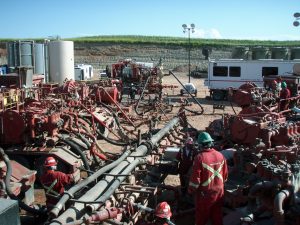 Maybe the most remarkable observation one could make about hydraulic fracturing is the fact that its sophistication seems to expand at an exponential rate. Not a week goes by that someone does not announce a new service or product or technique that promises to revolutionize some angle or other within the frac world.
Maybe the most remarkable observation one could make about hydraulic fracturing is the fact that its sophistication seems to expand at an exponential rate. Not a week goes by that someone does not announce a new service or product or technique that promises to revolutionize some angle or other within the frac world.
And we can’t even begin to present a full roundup of recent changes within this niche, if we wanted to. So to impart a flavor of the steadily inexorable rate of change that happens within the fracturing space, we tap three widely diverse sources for examples of new twists—you’ll have to imagine the advances we left out. Suffice it to say, fracturing is ever in flux and where it will be by the next decade—that is anyone’s guess.
Automation on the Frac Spread
There’s that “A” word again. Automation. It seems to work its way into everything oilfield. In the frac realm, one of the latest innovations is something Halliburton is calling the “Auto Pumpdown.”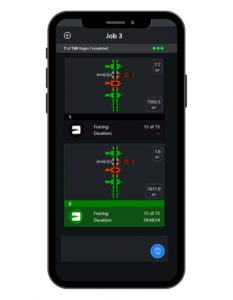
This spring Halliburton announced the implementation of its Auto Pumpdown service. The Auto Pumpdown enables wireline and pump automation during unconventional completions operations.
In this arrangement, the fluid pumps and a wireline unit are controlled as a single, fully automated, closed-loop system to maximize plug and perforating performance and efficiency. The system executes operations to plan and optimizes equipment operation for improved consistency.
An Auto Pumpdown service enhances operations by automating tasks previously prone to human inconsistencies. The service reduces risk by providing prompt feedback to dynamic downhole conditions, which helps prevent unplanned and costly interventions. These improved consistencies create more efficient operations and reduce required fluids for tool conveyance.
The new service “ushers in a new era of intelligent plug-and-perf operations that reduce risk while redefining the level of efficiency and consistency we provide our customers,” said Chris Tevis, vice president of Wireline and Perforating, Halliburton. “The service… minimizes variability in operations, which helps avoid unnecessary and costly well interventions and simultaneously improves efficiencies.”
From the Field to Cyberspace
It’s still hard for many of us to wrap our heads around the idea of heavy industry being controlled by an app on a cellphone. The seeming disparity between a frac spread, which is rather like a small city, and a pocket device makes the connection always a bit of a surprise. But surprise or no, device-controlled systems are everywhere in the oilfield.
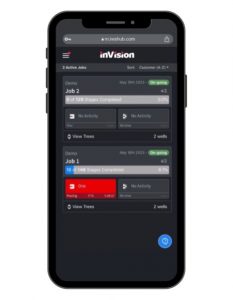 One of the latest is the InVision Mobile App from Intelligent Wellhead Systems. Its makers say it improves frac safety and reliability and gives on-the-go users a concise, accurate snapshot of critical operational data.
One of the latest is the InVision Mobile App from Intelligent Wellhead Systems. Its makers say it improves frac safety and reliability and gives on-the-go users a concise, accurate snapshot of critical operational data.
IWS says that, to date, InVision completion technology has delivered more than 95,000 stages without a single wireline or pressure control incident. “Developing the inVision Mobile App represents the next step in our efforts to encourage operators to embrace a digital infrastructure,” said Bill Henn, Vice-President of Business Development for IWS. “By giving operators even greater, easier access to operational data at the wellsite, they can respond immediately to changing conditions, helping to reduce risk, lower costs, and improve uptime while on-the-go.”
With inVision Mobile, users can now view a wide range of key data from a cell phone or tablet. They can inspect pad progress and current well activity, a live frac tree, and live valve positions. When running frac and wireline data through IWS safety and efficiency controls, users can analyze frac and wireline plots remotely, as well as a pre-set frac and wireline plots with the most pertinent data. Plus, they can select and de-select additional channels on the plot through the plot data configuration option. Data channels can also be turned on and off from the plot views.
Infinite Fractures, Plus Dual Stimulation
Lastly, we turn to Schlumberger, now known as SLB, for a couple of quick notices.
Schlumberger has pioneered a “flow channel fracturing technique” that changes the way proppant fractures generate conductivity. The first of its kind, this technique, dubbed HiWAY, creates open pathways inside the fracture, enabling hydrocarbons to flow through the stable channels rather than the proppant. This optimizes connectivity between the reservoir and the wellbore—resulting in infinite fracture conductivity.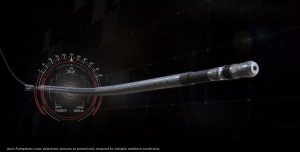
Schlumberger asserts that the HiWAY technique significantly increases fracture conductivity while reducing water and proppant consumption. This means higher production, simpler logistics, reduced operational time and footprint, and lower carbon emissions.
And in the what-will-they-come-up-with-next department, we find that Schlumberger has devised a technique that enables an operator to simultaneously stimulate two wells with a single stimulation fleet. The technique, they say, will save time and cost without sacrificing well performance. During a dual-fracturing job, a single frac fleet stimulates two wells on the pad while two wireline crews perforate an additional two wells on the pad at the same time, enabling simultaneous operations in four wells. This results in greater efficiency that enables the wells to be brought onto production sooner compared with conventional zipper fracturing.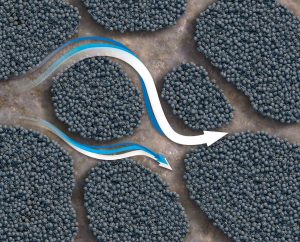
Oh, there’s more. More from Schlumberger. More from all of these and from all sources, it seems. We are in the age of frac innovation, and the upward curve has not shown signs of plateauing.









